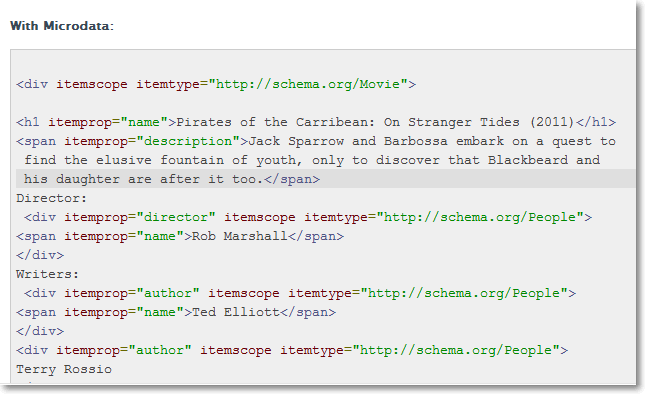This is where our work comes in, we can obtain better results if we make Google's task a little easier, using micro data, and thus it will take us into account more quickly.
How do they work?
Micro data is the data marking recommended by Google, in which HTML elements are marked by attributes, itemscop, itemprop, itemtype, the use of which makes indexing easier since the algorithm that processes it is more reliable and easier to debug.
Micro data goes directly to fragments of a page of the site and can indicate various things, for example: data about an author, the note of a blog entry, etc.
These serve to provide more information in a standardized way to search engines and facilitate data collection. The aggregated data is wrapped in html tags for easy indexing in engines.
There are several types of data markup, on the next page you can find all the types and examples of how to use it on your site, web schema.org
Can I use microdata without modifying my HTML?
Google also offers the possibility of adding this data to the site without the need to modify the HTML, this is done through a website recognition process, with Google data markup that identifies the pages of the website that have ever been crawled.
You can use Google data markup here: https://support.google.com/webmasters/answer/2692911?hl=es
If you have placed micro data on your website and want to know if it works correctly, we recommend that you test it at the following link: https://search.google.com/structured-data/testing-tool







